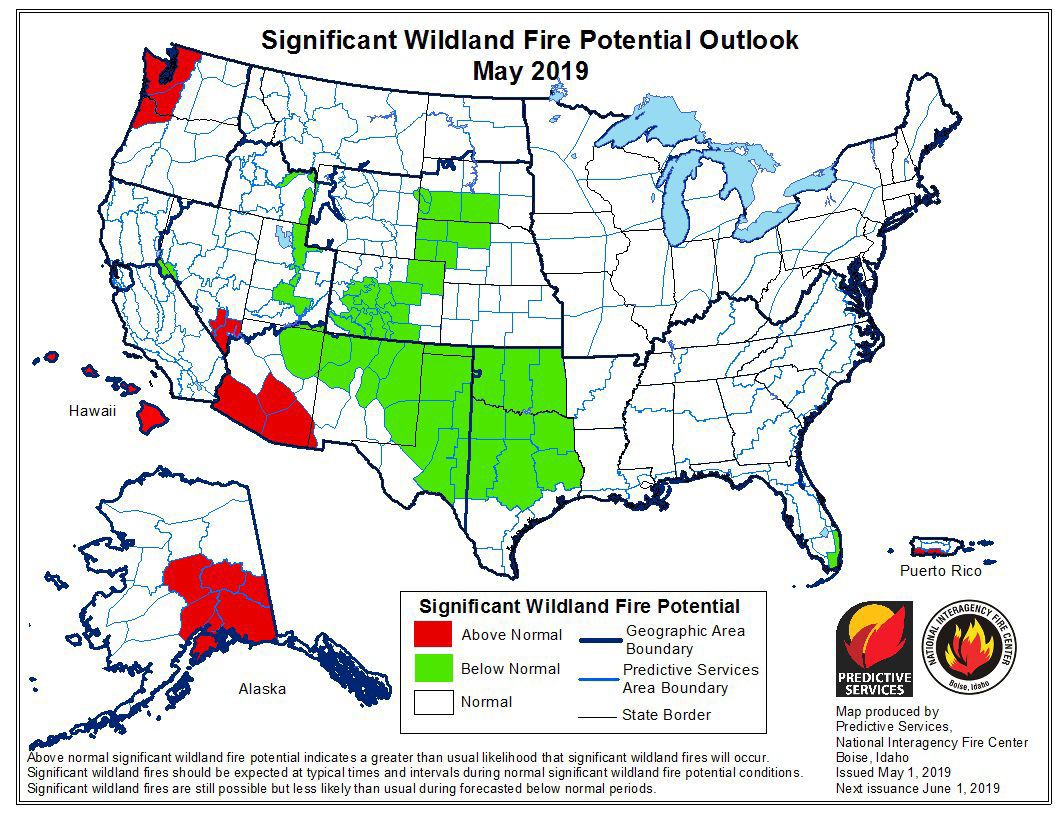
Ask just about any Californian and they will tell you that 2018’s massive wildfires are still fresh in their memory just as the 2019 fire season has officially arrived. Last week the National Interagency Fire Center put Californians on notice that they should expect another active fire season this year. The center said a heavy crop of grasses and fine fuels has developed across California and should elevate fire potential as it dries through the summer. AP also reported that “the Pacific Northwest has entered a period of moderate drought, which could mean an early fire season in the Cascade Range and the Okanogan region. The potential for significant wildfires is above normal west of the Cascade crest in Washington and Oregon through August.”
Jennifer Smith of the fire center explained to AP that the terms “normal” or “above normal” refer to a formula that involves drought, precipitation and fuel conditions in each region, projected on a 10-year average. Although states like California experienced record rainfall this winter and spring it’s not enough to change the overall trend toward drought in the West.
Eco Watch also explained how climate change specifically is changing vegetation and allowing wildfires to grow from bad to worse so quickly:
- In the Western U.S., climate change is a major driver behind the near doubling in burned area that we’ve experienced over the past 35 years, and has contributed to an increase in the frequency and severity of fires, while lengthening the fire season in some regions.
- Drought is a natural occurrence. However, now we have a greater risk of hotter droughts. Rising temperatures dry out soils and trees. While drought means that less water is entering the ecosystem, rising temperatures mean that water is leaving more quickly. As temperatures rise, plants lose more water per unit of carbon dioxide, exacerbating the already dry and dangerous conditions produced by drought.
- With less water coming into the ecosystem, plants become water stressed, which can kill huge numbers of plants if drought conditions persist. In extreme cases, drought itself can kill trees.
Dry conditions will return to California due to climate change. Wet years can serve as a bit of a reprieve but they will likely do little to prevent the prevalence of massive wildfires.
Why This Matters: There’s no such thing as a typical wildfire season anymore, although this year California and much of the West experienced an unusually wet winter and spring it’s certainly not a guarantee that a colossal fire won’t break out at some point during the 2019 wildfire season. That’s a big part of the underlying stress, Californians and residents in other Western states that experience wildfires live in fear that a ticking timebomb might go off at any time. While state officials are working through preparedness measures with the public and other mechanisms to help mitigate damage caused by wildfires, the federal government has shown very little leadership in how they might help tens of millions of Americans better prepare for and survive wildfires and how to help prevent them in the first place (it starts with bold action on climate change).
May 6, 2019 » California, Drought, wildfire


